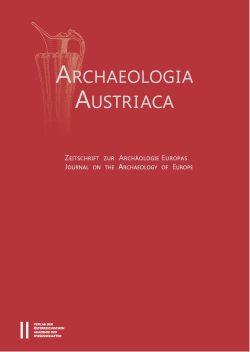
Archaeologia Austriaca 109/2025, pp. , 2025/06/11
Zeitschrift zur Archäologie Europas
Journal on the Archaeology of Europe

The Linear Pottery cemetery of Kleinhadersdorf (Lower Austria) is one of the oldest and best researched in Austria. Already during the excavations in the late 1980s, it was assumed that it was the burial site of a local population, although a connection to a specific settlement could not be clarified. In order to investigate this hypothesis, the Ludwig Boltzmann Institute for Archaeological Prospection and Virtual Archaeology carried out large-scale magnetic surveys in the surrounding area. The results revealed an extensive multi-phase settlement with at least 40 buildings. Most of the houses are classic medium- to large-sized Linear Pottery buildings with distinct post positions and a northeast-southwest orientation. Further anomalies in the survey area suggest that the cemetery was larger than previously thought. In 2020 and 2021, two of the buildings were investigated in more detail through targeted excavations. The excavations confirmed the accuracy of the geophysical data interpretation and provided evidence of a later occupation of the site in the Lengyel period. Here we present the results of the extensive archaeological investigations and their comprehensive integrative interpretation, discussing the unusual position of the settlement in the landscape, its internal structure and economic foundations.
Keywords: Neolithic, Linear Pottery Culture, settlement archaeology, magnetic prospection, airborne laser scanning, landscape archaeology